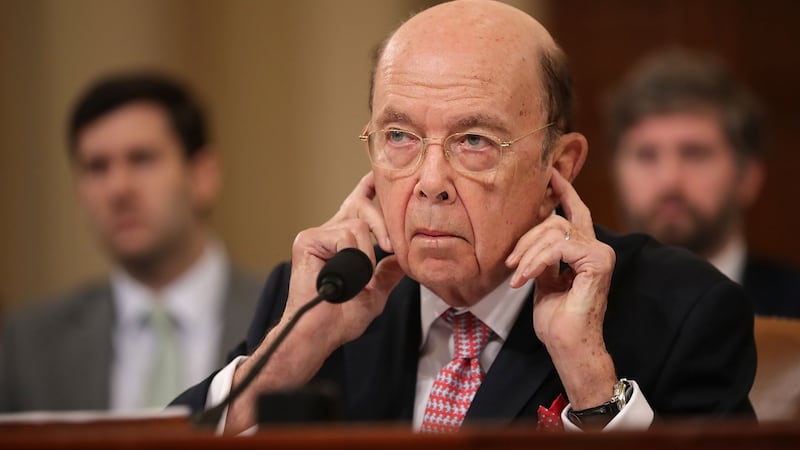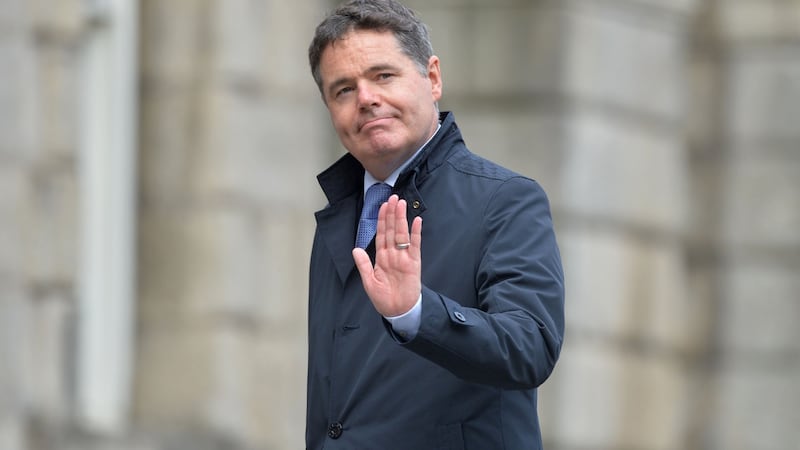The Government's decision to start selling down its remaining 13.9 per cent stake in Bank of Ireland has come as a bit of a surprise to the market, judging by the more than 5 per cent drop in the share price after the announcement on Wednesday morning.
But Minister for Finance Paschal Donohoe said his main reason for selling at this stage was because he was "very confident about the future of the Irish economy" as it rebounds from the Covid-19 crisis – and the ability of Irish banks to benefit from this.
It’s a far cry from the last crisis when the government of the day was pumping billions of euro into banks, rather than taking money out.


That’s all well and good. And the hope is that the share price, having rallied more than 200 per cent from its lows of early last year (even after a dip in recent weeks), will continue to rise amid a reopening of the economy. But the stock is still trading at more than a 40 per cent discount to the value that analysts put on its net assets, which raises questions about the timing.
On the other hand, the Government has a long-stated plan to get out of banks. It has to start from somewhere and Bank of Ireland, in which it has the smallest stake, is probably the best place.
Is the Government making a profit or a loss on Bank of Ireland?
Taxpayers are well in the money on their €4.7 billion bailout of Bank of Ireland between 2009 and 2011, but calculating the actual profit is a difficult exercise and depends on what you take into consideration.
To date, the Government has recovered €5.9 billion in cash from Bank of Ireland and its remaining stake is currently worth about €660 million. Some people would like to describe this as a €1.8 billion real and paper profit.
But €1.5 billion of this money came from fees the bank had to pay for Government guarantees at the height of the financial crisis. And a further €800 million was by way of share dividends and interest paid on exotic bailout bonds like preference shares and contingent convertible (CoCo) bonds.
Stripping out the guarantee fees and assuming that the 13.9 per cent stake will ultimately sell for about its current market value, you’re talking about a net return of a little more than €300 million.
In this context, it's hard to forget that some of the US investors that bought a major stake in Bank of Ireland from the Government in 2011, saving the lender from nationalisation, made a killing in the shares. These included Wilbur Ross, before he became Donald Trump's commerce secretary. The New York investment guru made a €500 million profit on his crisis-era investment, selling out by mid-2014 at prices as high as the equivalent of almost €9.90 a share (taking into consideration that the bank dramatically cut its number of shares in circulation in 2017). The shares closed at €4.40 on Wednesday.
What about the other banks?
The total €64 billion cost of the banking sector bailout during the financial crisis is ingrained in the national psyche. The €34.7 billion that was pumped into the long-defunct Anglo Irish Bank and Irish Nationwide Building Society has essentially gone into a black hole (excluding the complicated business of the Central Bank of Ireland making large profits on the sale of bonds tied to a restructuring of that part of the bailout bill).
Of the surviving banks, AIB's €20.8 billion rescue was by far the biggest. Taxpayers have so far recovered only about €10.8 billion of that. The Minister should be regretting that he didn't follow up a €3.8 billion share sale in June 2017 by quickly selling more shares to take advantage of a strong share price at the time. AIB shares are currently changing hands at less than half the €4.40 price of the 2017 sale.
Still, AIB secured approval from shareholders at its annual general meeting last month to potentially buy back 4.99 percentage points of the State’s 71 per cent stake over a 12-month period.
As for Permanent TSB (PTSB), it required a €4 billion bailout in 2011. About €1.8 billion of this has since been recovered, including proceeds from the sale of the group's former life assurance business, Irish Life, the redemption of bailout bonds and the government's sale of shares on the market in 2015.
But with PTSB in talks to buy a large part of Ulster Bank's almost €20 billion loan book, as the latter plots an exit from the market, the bank will need to raise additional capital to digest the deal.
Analysts reckon that PTSB could end up buying about €9 billion of Ulster's loans, requiring more than €500 million of capital. The Government continues to own 75 per cent of PTSB and will be expected to provide some of the necessary funds, even if PTSB chief executive Eamonn Crowley said last month that there was "immense" interest among stock market investors to back the deal.
Government sources insist there is no link between the decision to start selling down Bank of Ireland shares and preparations for taxpayers to potentially pump more money into PTSB.
How much of the 13.9% Bank of Ireland stake is the Government selling?
The Government has hired brokers in Citibank to sell a chunk of the shares over the course of six months, with the possibility of the programme being extended. But Mr Donohoe has refused to give the minimum price that he will accept for the shares or how much of the stake will be sold by the year end.
However, analysts at Davy and Goodbody Stockbrokers estimate that the Minister’s plan to account for no more than 15 per cent of share trading in the bank over the next six months could result in him selling between a third and two-thirds of the stake by the end of the period, depending on market activity.










